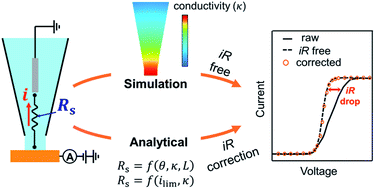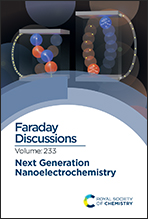Nanoscale electrochemical mapping techniques, e.g., scanning electrochemical cell microscopy (SECCM), have been increasingly used to study the local electrochemistry in electrocatalysis. Its capability for local electrochemistry mapping helps to reveal the heterogeneity in the electrode kinetics and mechanisms, which are otherwise averaged out in ensemble measurements. Accurate determination of the electrode kinetics requires the careful assessment of the ohmic potential drop in the solution, i.e., the iR drop. Herein, the iR drop in SECCM experiments is assessed. We showed that the iR drop in single-barrel SECCM can be estimated using the solution conductivity and pipette geometry, or the mass transfer limiting current without the assumption of pipette geometry. For dual-barrel SECCM, we developed a method of measuring the solution resistance directly, which can be used to compensate for the iR drop and the potential shift in the experiments. These methods offer a convenient way to estimate and compensate for the iR drop in SECCM, allowing the more accurate measurement of local electrode kinetics for the determination of local mechanisms in electrocatalysis.

You have access to this article
 Please wait while we load your content...
Something went wrong. Try again?
Please wait while we load your content...
Something went wrong. Try again?



 Please wait while we load your content...
Please wait while we load your content...
